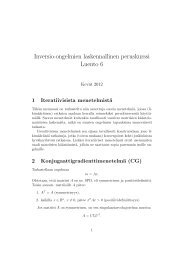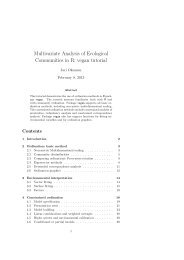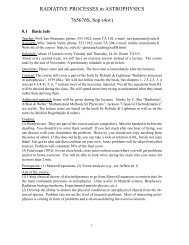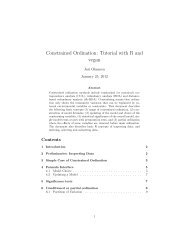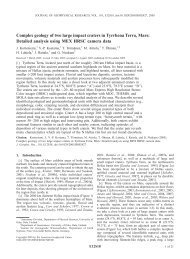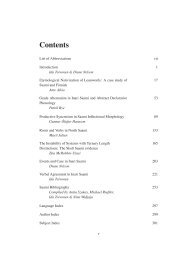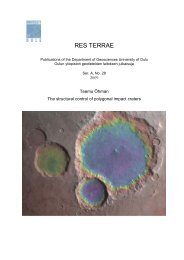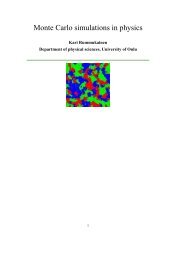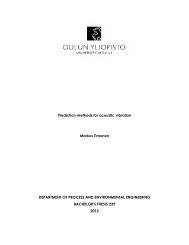Juha Köykkä - Oulu
Juha Köykkä - Oulu
Juha Köykkä - Oulu
- TAGS
- juha
- oulu
- cc.oulu.fi
Create successful ePaper yourself
Turn your PDF publications into a flip-book with our unique Google optimized e-Paper software.
Res Terrae, Ser. A 32, J. <strong>Köykkä</strong>, Sedimentology of the Mesoproterozoic Telemark basin-fills, South Norway: implications for<br />
sedimentation processes, depositional environments and tectonic evolution<br />
6 Discussion<br />
6.1 Applicability of the used methods<br />
Precambrian rock strata often show a lack of lateral and vertical outcrops, which<br />
presents a major problem in lithostratigraphic correlation. The unexposed and sheared<br />
contacts between formations are often highly problematic because they may hide some<br />
of the information of the strata. To tackle these difficulties, it is important to use of<br />
geochemistry as supplementary data and to understand which parts of the sedimentary<br />
basin (e.g., proximal vs. distal and axial vs. flank) successions are preserved and ex-<br />
posed.<br />
The principles of Phanerozoic facies models are mainly based on the basic prin-<br />
ciples of actualism, the natural law of the limited number of depositional environ-<br />
ments, Walther’s Law of vertical successions, and the assumption of the uniformita-<br />
rianism of recent analogues in the past. However, when studying Precambrian sedi-<br />
mentary environments, at least two different “hypotheses” of facies models must be<br />
taken into account. First, the assumption of Walther’s Law is that the vertical succes-<br />
sion of facies may reflect a lateral juxtaposition of depositional environments. Howev-<br />
er, this fundamental law only applies when there have been no significant changes in<br />
factors that control sedimentation patterns. In other words, it only applies to succes-<br />
sions without major breaks in sedimentation, which can be complicated to prove in<br />
Precambrian strata. Second, Phanerozoic facies models represent a snapshot of the lat-<br />
eral relationships of sedimentary environments and facies over a limited amount of<br />
time. In addition, due to geological, atmospheric and biological differences in the Pre-<br />
cambrian, some of the sedimentary basin conditions in the past may not have analo-<br />
gues today, and non-uniformitarian models may have to be used. Thus, it is import to<br />
recognize, from the study area facies scheme, what is actually local and what is global.<br />
Usually, unit and bed contacts are an important part of facies studies (e.g., sharp, gra-<br />
dual) because they can record significant breaks in sedimentation. Although it is diffi-<br />
cult to apply a 3D facies architecture analysis to Precambrian strata, lithofacies analy-<br />
sis is a fundamental tool in Precambrian basin analysis because it helps clarify the se-<br />
dimentation processes at local, regional, and possibly global scales. The lithofacies as-<br />
semblages and paleohydrological parameters presented in the six papers suggest that<br />
61



